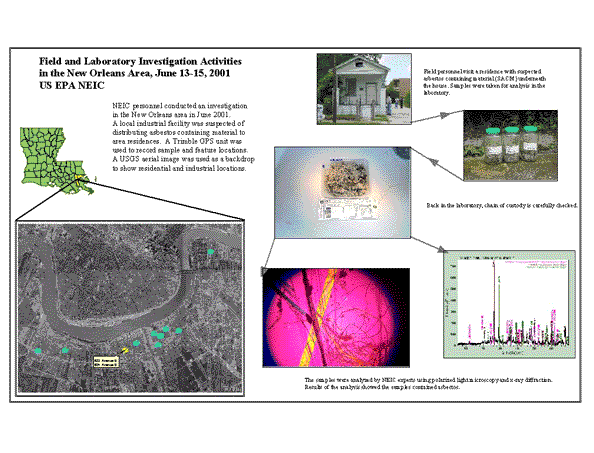The US EPA National Enforcement Investigations Center conducted an investigation in the New Orleans area. ArcView was used to show field activities and laboratory analysis data in a spatial context. GPS was used to collect locational information in during field activities. Field sampling events, digital photos, and laboratory results were linked to locations to provide a record for important case elements. The efforts of many people were demonstrated in a single GIS project.
A team from the National Enforcement Investigations Center (NEIC) conducted an environmental investigation on an industrial facility that was suspected of distributing asbestos containing material to area residences. The NEIC Field Branch used ArcView to plan and prepare for the case. Topographic maps, aerial images, census information, residential address data, and remote sensing data helped prepare the field team for analytical and sampling activities. A mapping-grade global positioning system unit was used to record pin-point locations of samples. The sample locations were viewed as a theme over digital orthophotos acquired from the US Geological Survey. Field personnel used ArcView to manage sample information such as the type, address, location, time, and chain-of-custody numbers.
The NEIC Laboratory Branch provided analysis of suspected asbestos containing material for the samples. The NEIC used ArcView to record the analytical results from the New Orleans samples in the form of tables, photographs, images, and comments.
ArcView simplified the organization of field sampling events, GPS data, digital photographs, and investigator comments for effective project management. ArcView also allows access to important case information by simply clicking on points within the desired themes in which the hot-link functionality is utilized. The layout functions in ArcView can create presentation displays that simplify case elements for different audiences.

The NEIC developed a solution that enables users to manage, access, analyze, and display important case elements whether in the field, lab, or courtroom.
